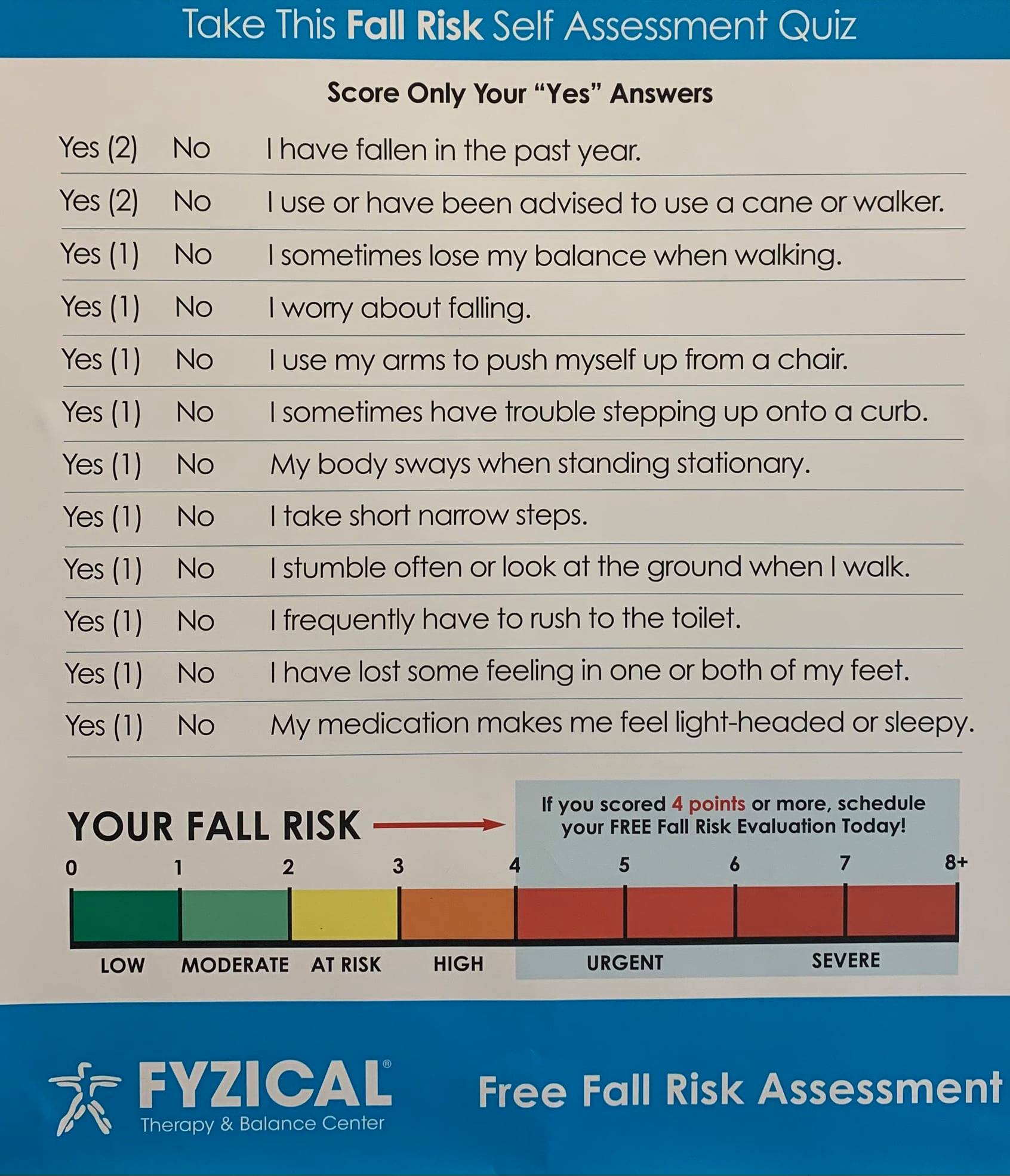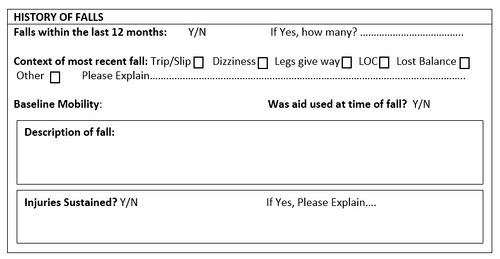How Dementia Fall Risk can Save You Time, Stress, and Money.
How Dementia Fall Risk can Save You Time, Stress, and Money.
Blog Article
The Ultimate Guide To Dementia Fall Risk
Table of Contents7 Easy Facts About Dementia Fall Risk ShownDementia Fall Risk Fundamentals ExplainedSome Known Details About Dementia Fall Risk Rumored Buzz on Dementia Fall Risk
An autumn threat analysis checks to see just how most likely it is that you will certainly fall. The analysis usually consists of: This consists of a series of inquiries regarding your overall health and if you've had previous drops or troubles with balance, standing, and/or strolling.STEADI consists of testing, assessing, and intervention. Interventions are suggestions that may decrease your danger of falling. STEADI consists of 3 steps: you for your danger of falling for your risk elements that can be enhanced to try to avoid drops (as an example, balance problems, impaired vision) to minimize your danger of dropping by using efficient methods (for instance, providing education and sources), you may be asked a number of questions including: Have you dropped in the previous year? Do you feel unstable when standing or strolling? Are you bothered with dropping?, your provider will certainly evaluate your toughness, balance, and gait, using the following loss evaluation tools: This test checks your stride.
If it takes you 12 seconds or even more, it may mean you are at higher risk for a fall. This test checks toughness and equilibrium.
Relocate one foot midway ahead, so the instep is touching the big toe of your other foot. Relocate one foot totally in front of the various other, so the toes are touching the heel of your various other foot.
The Main Principles Of Dementia Fall Risk
The majority of falls take place as an outcome of numerous contributing variables; therefore, handling the danger of dropping starts with determining the aspects that add to fall threat - Dementia Fall Risk. Some of the most pertinent risk elements include: History of prior fallsChronic medical conditionsAcute illnessImpaired stride and balance, lower extremity weaknessCognitive impairmentChanges in visionCertain risky medications and polypharmacyEnvironmental factors can also increase the danger for drops, consisting of: Insufficient lightingUneven or harmed flooringWet or slippery floorsMissing or damaged hand rails and get hold of barsDamaged or improperly fitted tools, such as beds, mobility devices, or walkersImproper usage of assistive devicesInadequate guidance of individuals staying in the NF, consisting of those who exhibit hostile behaviorsA successful fall danger monitoring program calls for a complete clinical evaluation, with input from all members of the interdisciplinary group

The treatment plan need to likewise include interventions that are system-based, such as those that advertise a risk-free setting (ideal lighting, handrails, get bars, and so on). The effectiveness of the interventions ought to be evaluated periodically, and the care strategy changed as necessary to mirror changes in the loss risk evaluation. Implementing a loss danger monitoring system making use of evidence-based best practice can reduce the occurrence of falls in the NF, while restricting the possibility for fall-related injuries.
What Does Dementia Fall Risk Mean?
The AGS/BGS guideline advises screening all adults matured 65 years and older for fall risk yearly. This screening is composed of asking individuals whether they have actually dropped 2 or more times in the past year or looked for clinical focus for a loss, or, if they have actually not fallen, whether they feel unsteady when strolling.
Individuals who have fallen once without injury needs to have their equilibrium and stride reviewed; those with stride or equilibrium abnormalities must obtain additional evaluation. A history of 1 loss without injury and without stride or equilibrium troubles does not call for additional evaluation beyond continued yearly autumn danger screening. Dementia Fall Risk. A loss risk assessment is called for as component of the Welcome to Medicare exam

The Ultimate Guide To Dementia Fall Risk
Recording a falls history is one of the quality indications for loss prevention and administration. copyright medications in particular are independent predictors of drops.
Postural hypotension can often be minimized by reducing the dosage of blood pressurelowering medicines and/or stopping drugs that have orthostatic hypotension as a side impact. Use above-the-knee support hose pipe and sleeping with the head of the bed raised may likewise lower postural decreases in blood pressure. The recommended elements of a fall-focused checkup are received Box 1.

A pull time more than or equivalent to 12 secs recommends high a fantastic read fall threat. The 30-Second Chair Stand test analyzes reduced extremity toughness and equilibrium. Being incapable to stand up from a chair of knee height without using one's arms indicates increased fall risk. The 4-Stage Equilibrium test analyzes fixed balance by having the individual stand in 4 settings, each gradually a lot more tough.
Report this page